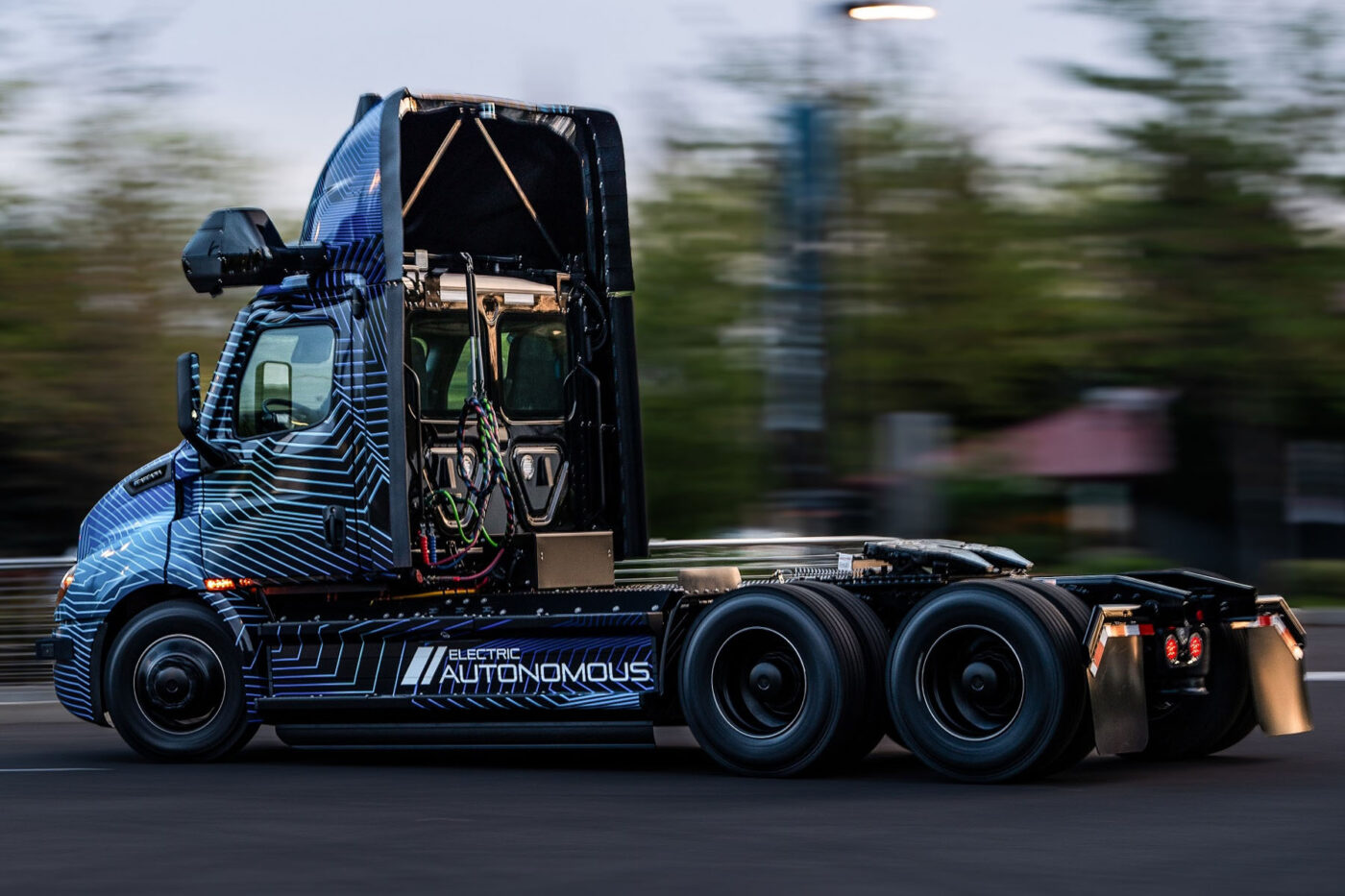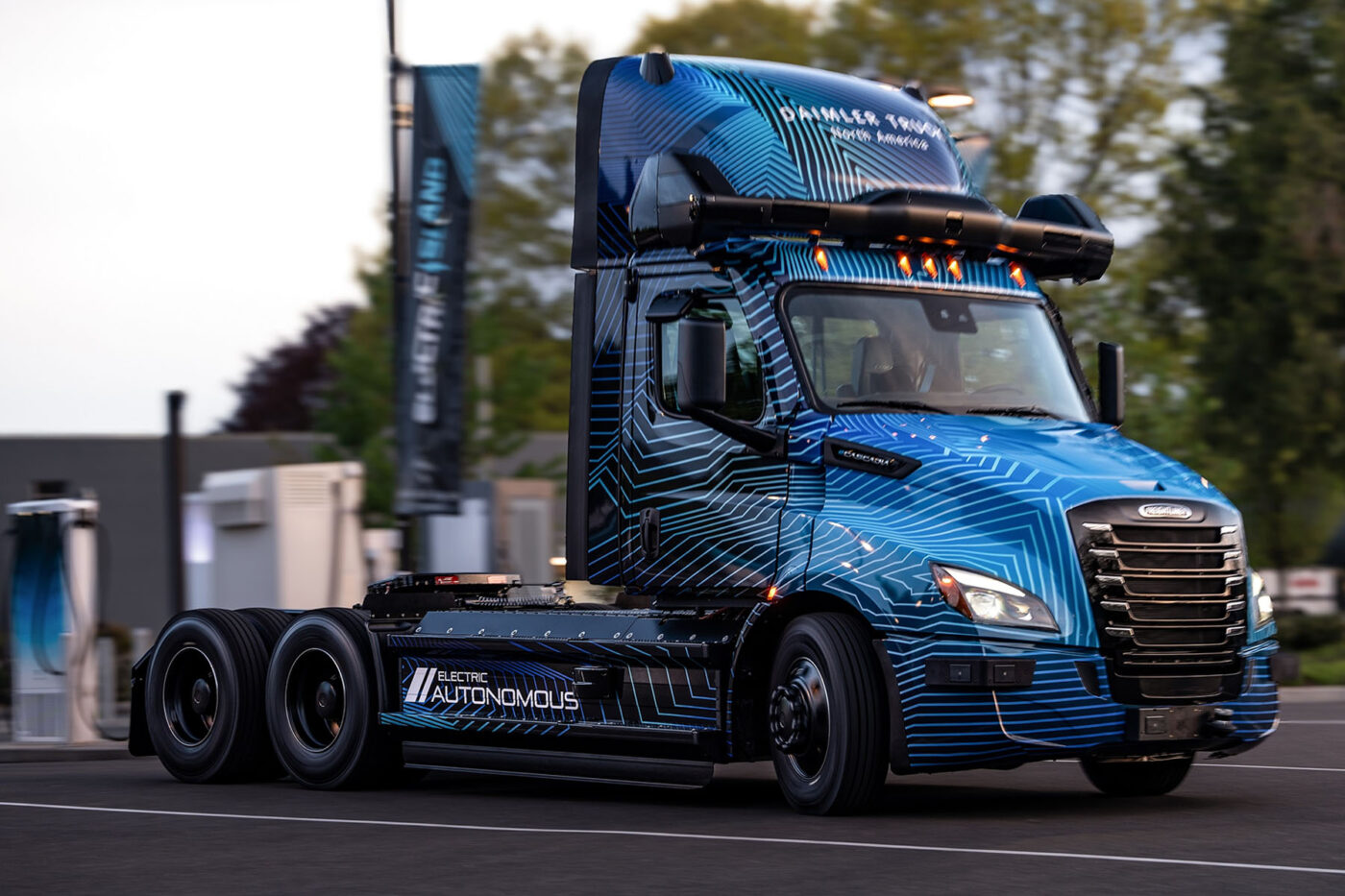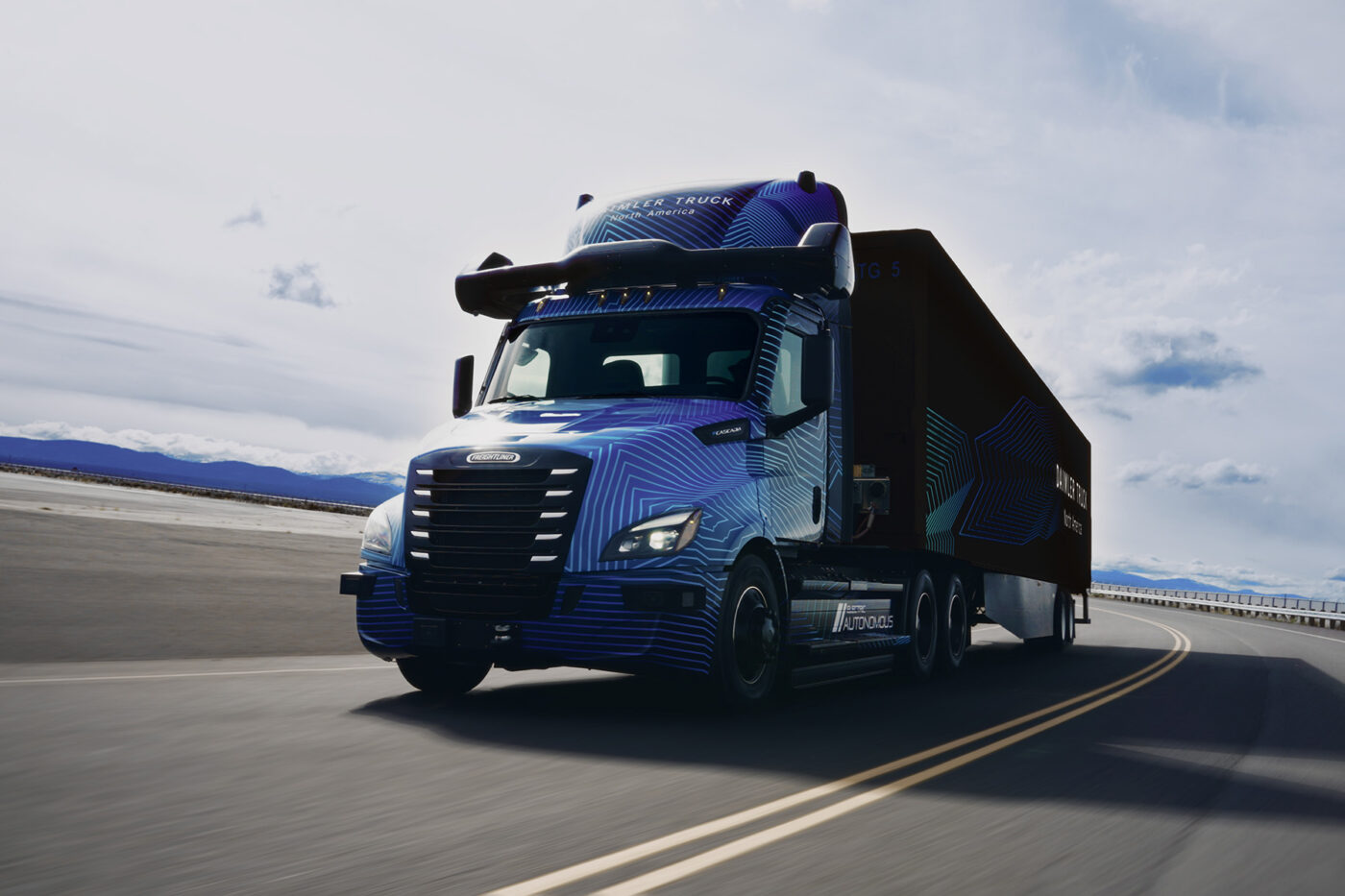Daimler Truck to develop autonomous Freightliner eCascadia
The truck is based on the North American series model of the battery-electric Freightliner eCascadia and is equipped with autonomous driving software from Daimler subsidiary Torc Robotics as well as state-of-the-art sensors and computer technology. At a later date, the technology carrier will be able to drive fully automatically in accordance with SAE Level 4. In fully automated driving, the vehicle operates completely autonomously under certain conditions – it may even drive alone, so without occupants. The vehicle must be able to reach a safe state without the intervention of a human driver, for example, coming to a stop on the verge or in a car park. Although the vehicle is autonomous at level 4, it is still subject to certain conditions such as a defined route, driving on the motorway or in a car park.
In the currently prioritised hub-to-hub application, the truck drives autonomously between freight centres along US motorway corridors. In a possible future scenario, the charging infrastructure and autonomous logistics centres could be brought together. The electric charging process could take place at the same time as the loading process, which would further increase efficiency for transport companies. That is the vision.
Technical concept
Firstly, the truck: as already mentioned, the Freightliner eCascadia forms the basis for the technology platform. The model celebrated its market debut in 2022, but Daimler had already handed over the first prototypes of the eCascadia to customers in 2018, and the first pre-series models have been undergoing fleet testing since August 2019. To date, the eCascadia has travelled more than 6 million miles with customers in more than 55 fleets in the USA, writes Daimler Truck in its press release.
The autonomous eCascadia technology carrier has many similarities with the Freightliner eCascadia production model. In addition to simplified maintenance options, the aim is to benefit from previous customer experience. Examples of the series production version of the electric heavy-duty truck have already been flown in by Penske Truck Leasing, the food supplier Sysco and the US retail giant Walmart, among others.






The battery of the Freightliner eCascadia can be charged to 80 per cent capacity in 90 minutes. Various battery and drive axle options are available, offering a typical range of 155, 220 or 230 miles (equivalent to approximately 249, 354 or 370 kilometres) depending on the configuration. The Freightliner eCascadia is equipped with the proprietary Detroit ePowertrain. Several driving assistants, such as an advanced Active Brake Assist, are also on board as standard.
Autonomous driving tests
Daimler Truck presented the Freightliner Inspiration Truck in 2015. This truck was the first licensed SAE Level 2 autonomous commercial vehicle for public road use in the USA. In 2021, Torc began autonomous driving tests of the diesel-powered Cascadia on public roads in Albuquerque, Texas. Torc has been trialling the autonomous Freightliner Cascadia truck in real-life applications with selected logistics companies such as Schneider and C.R. England for a year now. The customers’ freight is transported autonomously on the test route between Phoenix, Arizona, and Oklahoma City, Oklahoma.
For the first time, sensors and computer hardware are now integrated into a compact unit on the battery-electric eCascadia with a short cab for distribution transport or short journeys. To ensure sufficient cooling, the pre-development team has developed an advanced concept for cooling the computer unit. This is positioned between the driver and passenger seats. The software provides the autonomous system with control interfaces and feedback on important vehicle status data. A specially developed cover for the sensor strip contains cameras, lidar and radar sensors. It is designed to provide protection against damage and dirt, but also to improve aerodynamics. Four additional 12-volt batteries provide integrated energy storage so that the virtual driver unit can be supplied with electrical power and operated even when the high-voltage batteries are inactive. This should ensure uninterrupted autonomous driving as well as increased efficiency and safety.
Outlook
Daimler Truck wants to bring autonomous trucks to the US market by 2027. With the technology carrier, the autonomous technology is to be developed into a modular, scalable platform that is independent of the drive technology and can be used flexibly in various truck applications. According to the press release, the aim is to offer autonomous driving customers a wider range of vehicles in the future to meet their specific transport requirements and applications.
“Together with Torc Robotics, we are making significant progress towards the planned introduction of autonomous trucks in the US in 2027. While we are focusing on autonomous trucks with conventional drive technology for this initial market launch, we are always looking further into the future. We will take an iterative approach to developing, testing and optimising autonomous and zero-emission driving technologies, working with our fleet customers to explore the most promising use cases,” explains Joanna Buttler, Head of Global Autonomous Technology Group at Daimler Truck.
According to the press release, Daimler Truck aims to generate sales of more than three billion euros with autonomous driving by 2030.
Source: Info via email




1 Comment